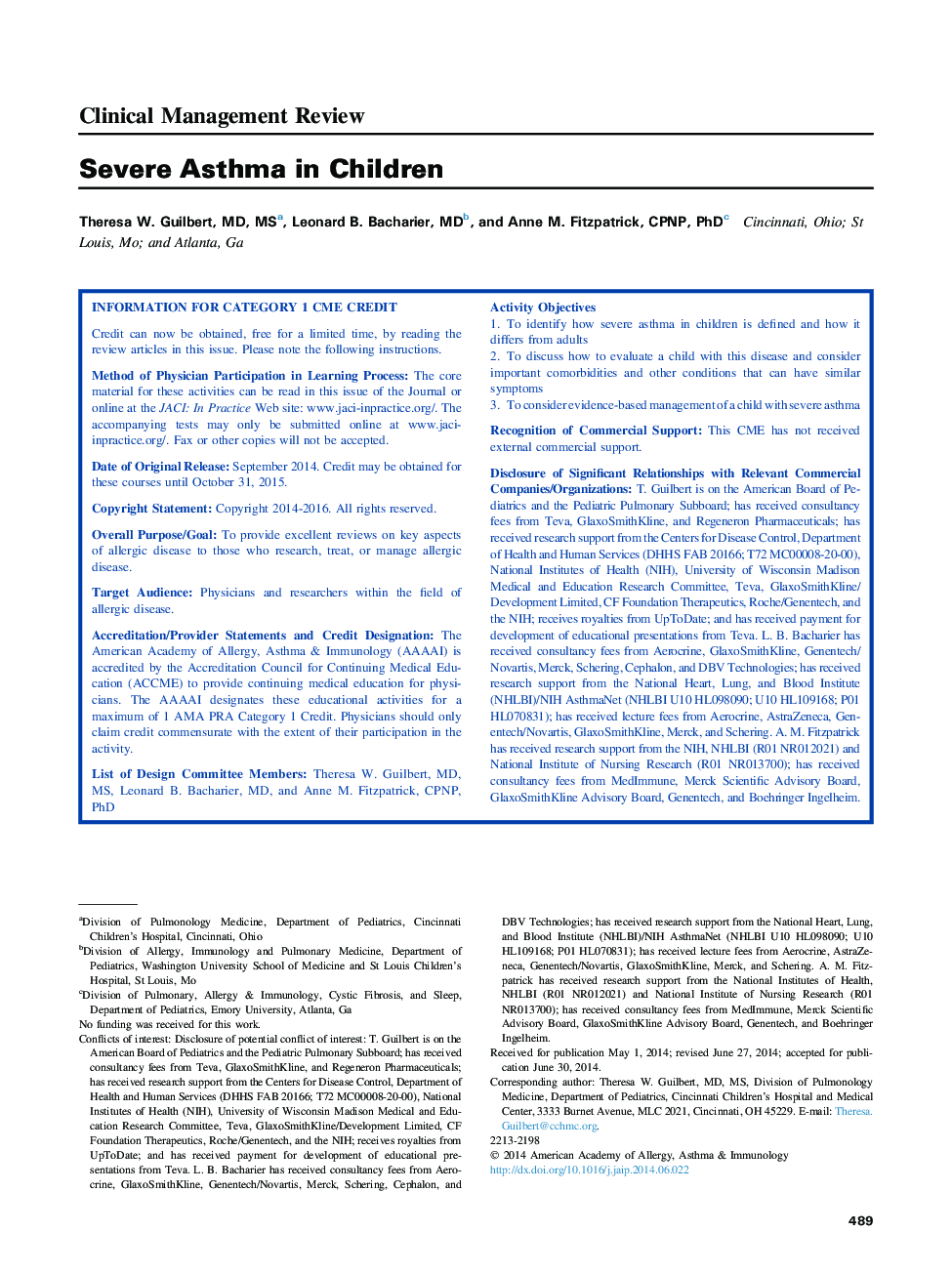| Article ID | Journal | Published Year | Pages | File Type |
|---|---|---|---|---|
| 3204191 | The Journal of Allergy and Clinical Immunology: In Practice | 2014 | 12 Pages |
Abstract
Severe asthma in children is characterized by sustained symptoms despite treatment with high doses of inhaled corticosteroids or oral corticosteroids. Children with severe asthma may fall into 2 categories, difficult-to-treat asthma or severe therapy-resistant asthma. Difficult-to-treat asthma is defined as poor control due to an incorrect diagnosis or comorbidities, or poor adherence due to adverse psychological or environmental factors. In contrast, treatment resistant is defined as difficult asthma despite management of these factors. It is increasingly recognized that severe asthma is a highly heterogeneous disorder associated with a number of clinical and inflammatory phenotypes that have been described in children with severe asthma. Guideline-based drug therapy of severe childhood asthma is based primarily on extrapolated data from adult studies. The recommendation is that children with severe asthma be treated with higher-dose inhaled or oral corticosteroids combined with long-acting β-agonists and other add-on therapies, such as antileukotrienes and methylxanthines. It is important to identify and address the influences that make asthma difficult to control, including reviewing the diagnosis and removing causal or aggravating factors. Better definition of the phenotypes and better targeting of therapy based upon individual patient phenotypes is likely to improve asthma treatment in the future.
Keywords
FeNOGERDERSACTPEFFVCNAEPPEGDATSACQICSN/ALong-acting β-agonistEuropean Respiratory SocietyAmerican Thoracic Societyesophagogastroduodenoscopyexhaled nitric oxideNational Asthma Education and Prevention Programgastroesophageal reflux diseaseAsthma control testcomputed tomographyPeak expiratory flowNot availableLABAbody mass indexBMIforced vital capacityReviewAsthma Control QuestionnaireInhaled corticosteroidGINA
Related Topics
Life Sciences
Immunology and Microbiology
Immunology
Authors
Theresa W. MD, MS, Leonard B. MD, Anne M. CPNP, PhD,
